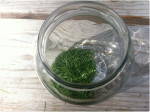Since the founding of the Boy Scouts and to the era of modern of survival schools, the “debris hut” has enjoyed great popularity. Unfortunately, the debris hut is not a practical design for emergency shelter.
To build a debris hut, you need 1) plenty of time, which no one in a survival situation has, 2) a mind sharp enough to employ woodcraft knowledge, which almost no one in a survival situation has, 3) an able body, which most people in survival situations do not have because of injury, dehydration, hypothermia, etc., and 4) abundant wood and debris, which only half of environments offer.
Therefore, by definition, if you can build a debris hut, you are not in a survival situation. The debris hut is not an emergency survival shelter. It is a fun project to do with fellow scouts over the course of a weekend.
Best Emergency Survival Shelter: The Bivouac Bed
A real survival shelter is one that will keep a person alive overnight, yet be built in a panic, in any environment, considering bodily injury, about twenty minutes before dark: the time when most people realize they are stuck for the night. Hello to what I coined as the Bivouac Bed, or Bivy Bed for short. I like to think I re-invented it. In actuality, I think this is what people always did when traveling in the “old days” – you know, when books describe (or movies show) how people used to be “tougher” sleeping on the cold, hard ground. Not tougher, but actually: smarter. What they must have done was make a Bivy Bed.
Five Minutes for Step One – Stop, Breathe, Drink & Eat: Just stop for five minutes. Count to 5 x 60 seconds = 300 if you don’t have a watch, and during that time, breathe as best you can. In a panic, it’s hard to breathe, but that’s exactlty what you need to do, so click here to see my previous blog post describing how to breathe. Also, remember to take a drink and eat a snack if you have something, to calm down, warm yourself up, clear your head, and strengthen your body.
Five Minutes for Step Two – Get Out Of The Wind & Other Elements: Look around. If you can see a better place to position yourself, then move safely to that place. A better place would be somewhere a) more protected from wind, b) better sheltered, for instance from precipitation such as under a tree that sheds water, or from blazing sun under a safe overhang that casts a shadow, c) away from things that can fall on you like snagged branches and precarious rocks, and last but not least, d) where debris and other building material is more abundant. Remember, wind is the thing that is going to make you coldest and most dehydrated, so position yourself on the leeward side of a tree or hillock, and use your clothing and gear to protect yourself further.
Five Minutes for Step Three – Insulate Yourself From The Ground: Insulate yourself from the ground if you want to stay warm. The ground is the second source of heat loss you can do something about. Why does the ground suck heat way? Because there is no trapped air space between you and the ground. Trapped air space is what insulates you. Think about it: that’s why all modern buildings have double- or triple-paned glass windows – it’s the trapped air that insulates, not so much the glass. That’s why cotton clothing is horrible when wet: water displaces air and most of the insulative value is lost – and that’s why synthetics and wool retains insulative value, because even when wet, those materials maintain bouyant air space. So here’s what you can do in just five minutes: take the side of your foot and scrape any and all loose debris – even dirt and sand if that’s all you’ve got – into a pile where you plan to bivouac (shelter in place). The bigger the pile the better. If the ground is covered with snow, then dig down and use the snow as walls around the debris you gather in the next step. If the ground is completely frozen and there is no ground debris, then just build snow walls around your bivouac location.
Five Minutes for Step Four – Gather Better Debris Around You: The debris you gathered in step three would have been the worst stuff you could find. Now look around and see if there are debris choices that would stay around you if you tried to get underneath them. For instance, are there standing grasses, big ferns, or low-hanging leafy branches like evergreen boughs? Remember, deciduous leaves won’t stay on top of you, but longer debris will, and that’s the stuff that will be cleaner, drier, trap air better, and even provide good aroma for your bivouac bed.
Best Emergency Bivy Bag Recommendations
If you thought ahead and brought your #1 Most Essential Item when hiking into nature, you should have, at the very least, a plastic bag with you, because shelter is your most important commodity. In ascending order of quality, your most marginal bivouac (bivy) bag option is the “emergency blanket” which should be renamed “reflective sheet for use as by emergency responders for burrito wraps, sun reflection, and as a very delicate tarp if that’s all you have.” It reflects radiant heat from bare skin, but retains very little convective or other kinds of heat.
For a bivy shelter, you really need a bag, so better than the emergency blanket is a big black garbage bag. It can be used in all the ways the emergency blanket can (as a tarp, etc.) but more important, you can get inside it. However, be sure to cut a hole in the side of the bag near the bottom of the bag for your face to stick out. Of course, you need to breathe, so don’t let the bag become a death trap. But notice I didn’t say cut a hole in the bottom. I said in the side near the bottom. When you put it over you, the bottom of the bag will become a rain-protecting hat, keeping water from leaking inside like it would if you had cut a hole in the bottom and stuck your whole head through it.
The next level up is a durable bivi bag. You can get a thick orange plastic bag from Plastic Place for about $2.00 including shipping. They are a bit heavy for ultralight afficianados, but their durabilty and visibility may save your life. For something higher tech, the Adventure Medical emergency and thermal bivi bags are what hikers really need. You should have their light-weight emergency bag on every short hike or run into nature. You should have their thermal bivi whenever you go for a half-day or full-day hike.
However, your bivy bag won’t work by itself. You need to make a Bivouac Bed, or “bivy bed” for short, on which to place yourself. The combination will increase your survival rate dramatically. If you have never slept that way before, your night will be absolutely miserable, but you will be alive in the morning. If you practice sleeping outside in a bivy sack and on a bivy bed, it will only take a few days for your body to acclimatize, and you will sleep through the night, even at temperatures approaching the freezing mark, just like our ancesters did millenia ago.
Best Primitive Survival Shelter: The Eagle’s Nest
So you have more than 20 minutes to work on your emergency survival shelter. Wonderful. The debris hut still isn’t worth your time. No, the Conservation College recommends what we call the Eagle’s Nest. This shelter was invented by a group of kids I was supervising one year ago, in March 2012. Check out my previous blog post on Emergency & Wilderness Survival – Tips, Suggestions & Advice for more background on how these children invented the Eagle’s Nest. A couple of them later attended our day camps taking place near Olympia WA, and this is what they did:
Five Minutes for Step Five – Gather Wood Around Your Debris: Get all the wood and rocks you can find to place around your pile of debris. Place the rocks and wood so that as you pile more and more debris, it builds up higher and higher, rather than falls wider and wider. You can make your debris pile any shape you want. Just remember, the larger it is, the longer it will take, and if you stay curled up, you will retain more heat while you rest. Your knees and back may ache badly, but the important thing is retain a good temperature.
Five Minutes for Step Six – Arrange Sturdy Wood Walls: Gather more wood as may be possible, but take five minutes to construct the best wooden walls you can make – ones that could support a roof if you have time to build one later. If the ground is soft, then stick branches in the ground to help construct your walls. If the ground is hard, then your sticks are all going to lay horizontally. Use any rope you may have to reenforce the wall structure, making it rise as high as possible.
Five Minutes for Step Seven – Gather Debris To Wrap Around You: Now gather more debris that you can later bury yourself into, or that at you can at least pull around yourself. Again, choices might include evergreen boughs, tall grasses, fern boughs, or other vegetation that is long enough to not fall off you easily.
Five Minutes for Step Eight – Place Roofing Materials: If you brought your #1 Essential, a piece of plastic, then you can now get inside your Eagle’s Nest and put the plastic above you for a roof. If you don’t have any plastic or other waterproofing material, then fashion a sloping roof with sticks, and that will help shed some water off to the side, or provide a place for snow, bark shingling, or other roofing materials to help insulate you further.
Remember, you will not be able to waterproof your shelter in these 40 minutes unless you brought your #1 Essential plastic bivy material, but just insulating yourself from the wind and ground will help you survive, however uncomfortably and miserably, until morning or help arrives.
Chris Chisholm is founder and co-owner of Wolf Camp & School of Natural Science. For in-depth learning, join our Weekly Online Classes:
- Tuesday Classes focus on Herbal Medicine & Plant Crafts in the autumn season, followed by Gardening & Cooking Wild Edible Food Plants in the spring.
- Thursday Classes focus on Wilderness Survival & Bushcraft Skills in the Autumn Season, followed by Wildlife Tracking & Birding in the spring.
- Saturday Classes for all ages guide you through the Wolf Journey Earth Conservation Course – Book One: The Neighborhood Naturalist.














Comment on “Good-Bye Debris Hut, Hello to the Best Emergency Wilderness Survival Sheltering System: The Wolf College BIVOUAC BED & EAGLE’S NEST plus bivy bag recommendations”